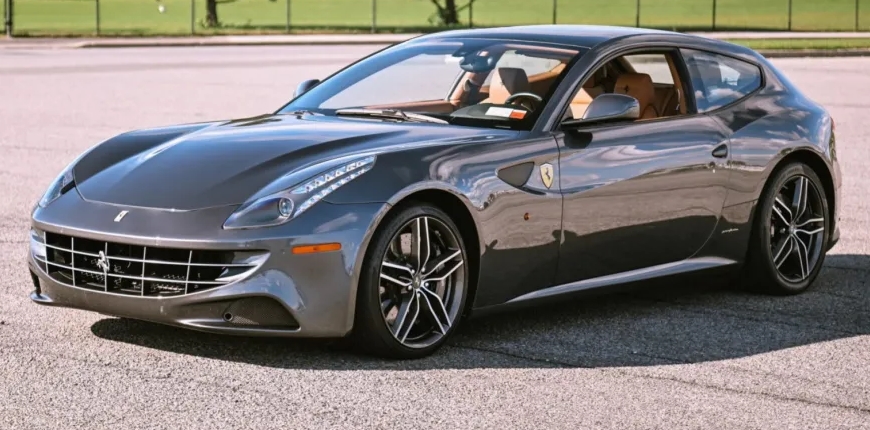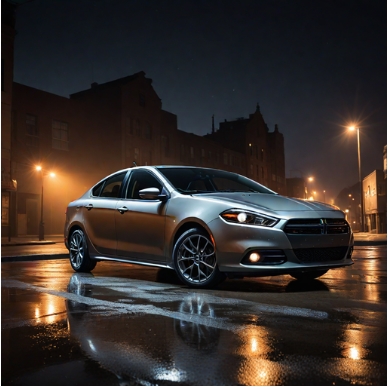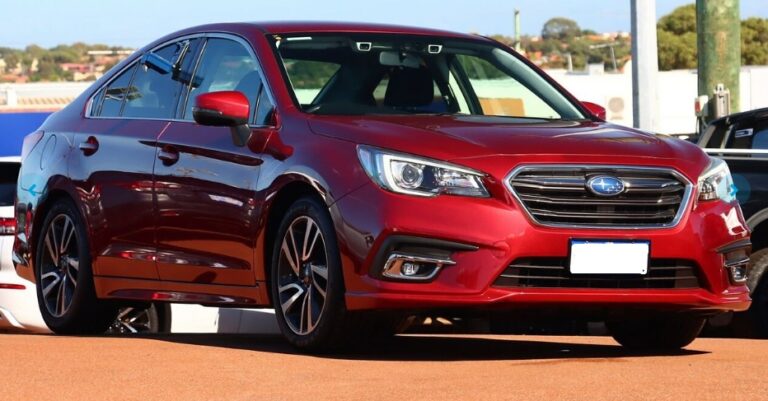The Prancing Horse for All Seasons: The Evolution of the Ferrari FF
In the storied annals of Ferrari, a marque defined by impossibly beautiful, blood-red, mid-engined supercars, the introduction of a new model is always a global event. But in 2011, the unveiling at the Geneva Motor Show was different. It wasn’t just a new car; it was a schism, a radical departure from everything the Prancing Horse seemingly stood for. What stood on the plinth was long, muscular, and featured a contentious “shooting brake” silhouette. It had four proper seats. And, in the ultimate act of heresy for the Maranello purists, it was four-wheel drive. This was the Ferrari FF, and its story is one of bold engineering, controversial design, and the complete redefinition of the modern grand tourer.
The Genesis: Replacing a Legend with a Revolutionary
The Ferrari FF, produced from 2011 to 2016, was born out of a necessity to replace the aging but elegant 612 Scaglietti. The 612 was a magnificent V12 2+2 grand tourer in the classic tradition: front-engined, rear-wheel drive, with a sumptuous cabin and continent-crossing ability. However, its usability was inherently limited by its drivetrain. Ferrari’s clientele was evolving; they wanted a car that could be their daily driver, a vehicle to take to the ski slopes of St. Moritz as easily as it could storm the autostrada to Milan. The answer was not an evolution of the 612, but a revolution.
The name itself was a statement of intent: FF, standing for Ferrari Four. This simple acronym encapsulated the car’s two most defining and controversial features: four seats and four-wheel drive. Ferrari tasked its long-time design partner, Pininfarina, with a near-impossible brief: create a car with genuine space for four adults and their luggage, house a colossal V12 engine up front, incorporate a novel all-wheel-drive system, and still make it look, feel, and drive like a true Ferrari.
The resulting design was undeniably bold. The front was pure, aggressive Ferrari, with long, swept-back headlights reminiscent of the 458 Italia. But from the A-pillar back, it was unlike any production Ferrari before it. The long, flat roofline culminated in an abrupt, Kamm-tail rear, creating the classic “shooting brake” profile—a two-door wagon. While polarizing, the design was brutally effective. It allowed for surprisingly generous rear headroom and a cavernous 450-litre boot, expandable to 800 litres with the rear seats folded. This was a Ferrari with the practicality of a family hatchback.
The Beating Heart: A Masterpiece V12
Underneath the long, sculpted bonnet lay the true soul of the FF: the F140 EB engine. This was a 6.3-litre, naturally aspirated 65° V12, a direct descendant of the engine found in the Enzo hypercar. In the FF, it was tuned to produce a staggering 651 horsepower at 8,000 rpm and 504 lb-ft of torque. This wasn’t a lazy, torquey GT engine; it was a high-strung, operatic masterpiece that screamed to its redline, delivering the kind of throttle response and sonic fury expected of a Maranello thoroughbred.
Mated to a 7-speed dual-clutch F1 transaxle mounted at the rear for optimal weight distribution (47% front, 53% rear), the FF’s performance was breathtaking. It could launch from 0 to 62 mph (100 km/h) in just 3.7 seconds and achieve a top speed of 208 mph (335 km/h). These were supercar figures, yet they belonged to a 1,900 kg four-seater capable of carrying skis.
The Technical Marvel: Reinventing the Wheel with 4RM
The FF’s most significant innovation was its 4RM (Ruote Motrici) four-wheel-drive system. Ferrari, ever obsessed with driving purity and feel, refused to adopt a conventional, heavy, and understeer-prone AWD system. Their solution was brilliantly unconventional.
The car remained, for all intents and purposes, a rear-wheel-drive vehicle. The 7-speed transaxle at the back powered the rear wheels exclusively most of the time. However, mounted to the front of the V12 engine was a separate, compact Power Transfer Unit (PTU). This PTU was a small, two-speed gearbox (with one gear being taller than the other to approximate the ratios of the rear transaxle’s third and fourth gears) with two independent wet clutches, one for each front wheel.
When the car’s advanced sensors detected a loss of traction at the rear, the PTU would engage, sending a precisely controlled amount of torque—up to 20% of the engine’s total—to the front wheels. This system was predictive, working in concert with the F1-Trac traction control and E-Diff to anticipate slip and maintain forward momentum.
Crucially, the 4RM system was designed for low-grip situations, not all-out performance enhancement. It only operated when the Manettino dial was in “Comfort” or “Snow” mode and only in the first four gears of the rear transaxle. Above fourth gear, or at higher speeds, the FF reverted to being purely rear-wheel drive, preserving the classic Ferrari handling balance. It was lightweight, complex, and utterly unique—a system designed not to corrupt the driving experience, but to extend it into conditions where any other Ferrari would remain garaged.
One Model, Infinite Personalities: The Ferrari Approach to “Trims”
Throughout its production run from 2011 to 2016, Ferrari offered the FF as a single model. There were no distinct trim levels like an “FF Sport” or “FF Gran Lusso” in the way other manufacturers structure their lineups. Instead, the differentiation and evolution came through continuous refinement and an almost limitless scope for personalization.
The “standard” FF was already exceptionally well-equipped with full leather upholstery, carbon-ceramic brakes, magnetorheological dampers (SCM3), and a dual-view front and rear parking camera system. However, the true essence of ordering an FF lay in the extensive options list and the bespoke Tailor Made program.
The Options List: This was where clients could transform their FF from a standard grand tourer into a personalized masterpiece. Popular and significant options included:
Suspension Lifter: An almost essential option, allowing the front of the car to be raised to navigate speed bumps and steep driveways without damaging the expensive front splitter.
Passenger Display: A small screen mounted on the passenger side of the dashboard that could display speed, RPM, and gear selection, giving the passenger a co-pilot experience.
Carbon Fibre Packages: Owners could specify extensive carbon fibre for the interior (steering wheel with LED rev counter, dash inserts, centre console) and exterior (front spoiler, side sills, rear diffuser).
Panoramic Roof: A full-length glass roof that bathed the cabin in light, enhancing the sense of space.
Upgraded Wheels and Finishes: A variety of forged wheel designs in different finishes were available, along with coloured brake calipers.
Premium Hi-Fi System: For those who occasionally tired of the V12’s symphony.
The Tailor Made Program: For its most discerning clients, Ferrari offered the Tailor Made program. This went far beyond the standard options list, allowing for a level of bespoke creation akin to haute couture. A client working with a personal designer in Maranello could specify unique exterior paints, custom-dyed leathers, and non-traditional interior materials like cashmere, denim, or technical fabrics. Each Tailor Made FF was a one-of-a-kind expression of its owner’s taste, representing the ultimate “trim level.”
While there were no official mid-cycle facelifts or named special editions of the FF, Ferrari did implement subtle running changes. The infotainment system, often criticized for being slow and dated, received software updates, and Apple CarPlay was introduced as an option in the car’s later years, a first for Ferrari.
.
You’ve got that cool car, but is it resting in its own cool place?
It’s visually pleasing for the surrounding areas outside of your home to look as awesome as what’s stored inside your garage! If you desire a truly inspirational environment, you should check into these plans!

.
The Legacy and Succession: The GTC4Lusso
By 2016, the FF had successfully proven its concept. It had carved out a unique niche, attracting new customers to the brand who valued its unparalleled blend of performance and practicality. It was time for an evolution. At the 2016 Geneva Motor Show, Ferrari unveiled the FF’s successor: the GTC4Lusso.
The GTC4Lusso was not a ground-up redesign but a comprehensive and intelligent evolution of the FF formula. It addressed the FF’s few weaknesses while enhancing its strengths.
Design: The styling was refined, particularly at the rear. Pininfarina’s successor, Ferrari Design Centre, replaced the single taillights with Ferrari’s signature twin-taillight design and added more complex aerodynamic sculpting, making the rear appear less heavy and better integrated.
Engine and Performance: The 6.3-litre V12 was further tuned to produce an immense 681 horsepower, dropping the 0-62 mph time to 3.4 seconds.
Technology: The cabin received a much-needed overhaul, centered around a massive 10.25-inch high-definition touchscreen that finally brought the car’s infotainment up to modern standards.
Drivetrain Evolution: The GTC4Lusso’s biggest technical leap was the introduction of 4RM-S. This system integrated the FF’s 4RM all-wheel drive with four-wheel steering. The rear-wheel steering made the large car feel more agile at low speeds and more stable at high speeds, a significant enhancement to its dynamic capabilities.
The GTC4Lusso also expanded on the FF’s “four-season” concept by later introducing the GTC4Lusso T, a rear-wheel-drive-only version powered by Ferrari’s twin-turbocharged V8 engine. This offered a different character and a lower entry point, broadening the appeal of the four-seater GT concept that the FF had pioneered.
In conclusion, the evolution of the Ferrari FF is not a story of different models and trims, but of a single, audacious idea brought to life and then masterfully refined. From 2011 to 2016, the FF stood alone, a testament to Ferrari’s willingness to shatter its own conventions. It was a car that proved a Prancing Horse could be practical without sacrificing its soul, usable in a snowstorm without diluting its V12 fury. The FF was a maverick, a trailblazer whose legacy is not just cemented in its successor, the GTC4Lusso, but also in the very existence of Ferrari’s first SUV, the Purosangue—a vehicle that owes its conceptual foundation to the brave, brilliant, and revolutionary Ferrari Four.







